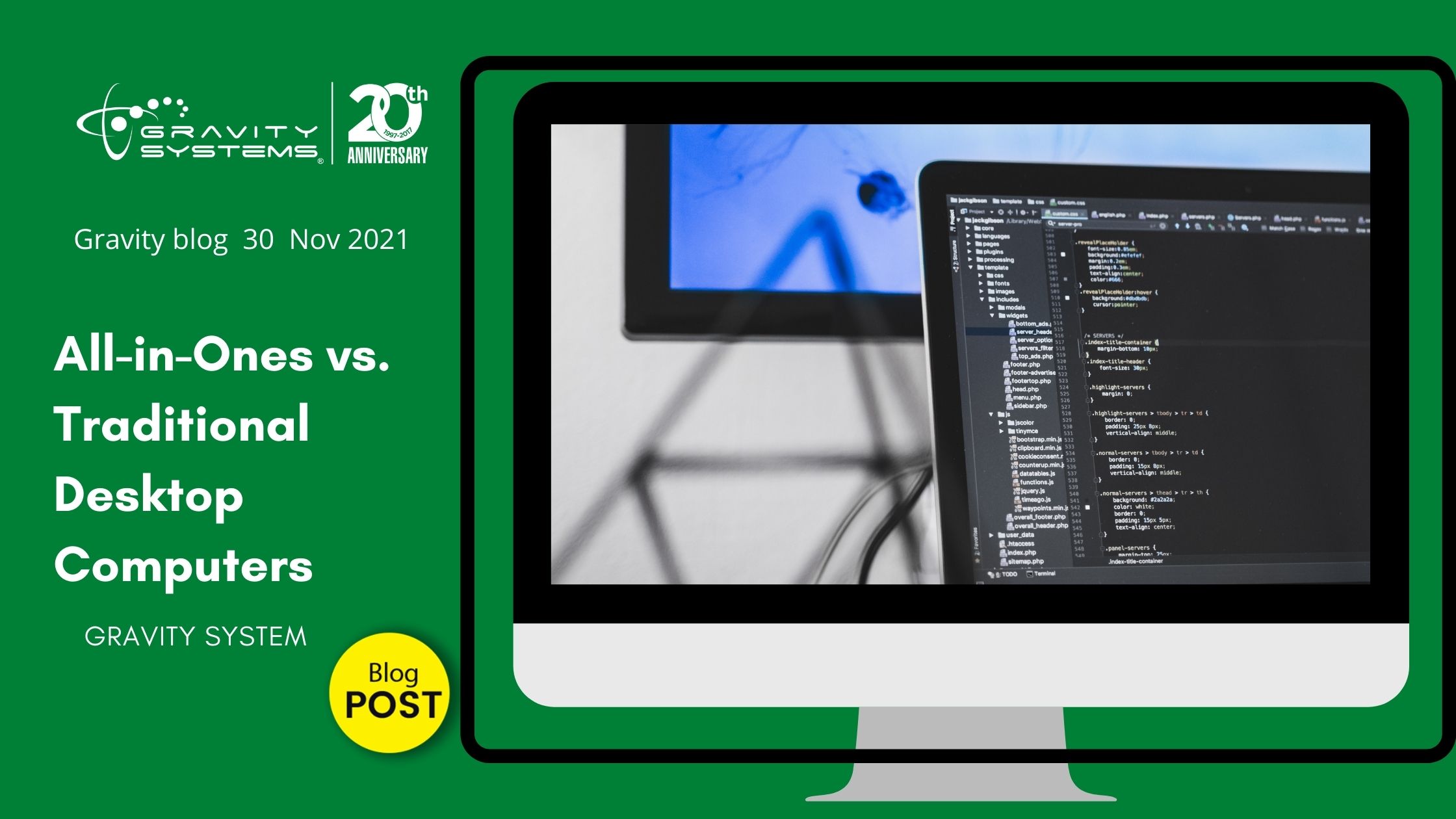Do you remember the first time you saw an all-in-one computer? Whether you viewed the concept as ridiculous or revolutionary, all-in-one computers have maintained impressive popularity over the past couple of decades, with many computer users attracted to these sleek, streamlined packages. But do all-in-ones serve as a sensible replacement for, or alternative to, traditional desktop computers? Here are some thoughts on the subject from your Austin IT services providers at Gravity Systems.
%20(1)-jpg.jpeg)
First, let’s consider the all-in-one’s good points. An all-in-one computer combines the computer itself with the monitor, giving you a single unit that’s easy to pack, unpack, and transport -- a useful plus when it comes time to relocate to a different facility. The integrated design also makes a smaller footprint, freeing more space on or under the desk. Many all-in-ones now come with touchscreens, which mobile device users have come to rely on as their preferred everyday interface method. And of course fewer pieces means a faster setup. An all-in-one is ready to go pretty much out of the box once you connect the peripherals.
Unfortunately, all-in-ones fail to compete with traditional desktop computers in some key areas. First of all, the fact that everything is built into the monitor assembly causes as many problems as it supposedly solves. This arrangement, with its lack of free interior space, makes it unduly difficult to replace or modify internal components. When you consider how quickly specs go obsolete, you could end up with an office full of dinosaurs relatively quickly.
All-in-ones have some other impracticalities, too. Users are stuck with the included monitor unless they connect a second one -- which eliminates the space-saving advantage. You’ll also find yourself paying more for the same performance that you would for the equivalent traditional computer.
Need help choosing and purchasing the most sensible hardware for your IT system? Contact us for assistance!




